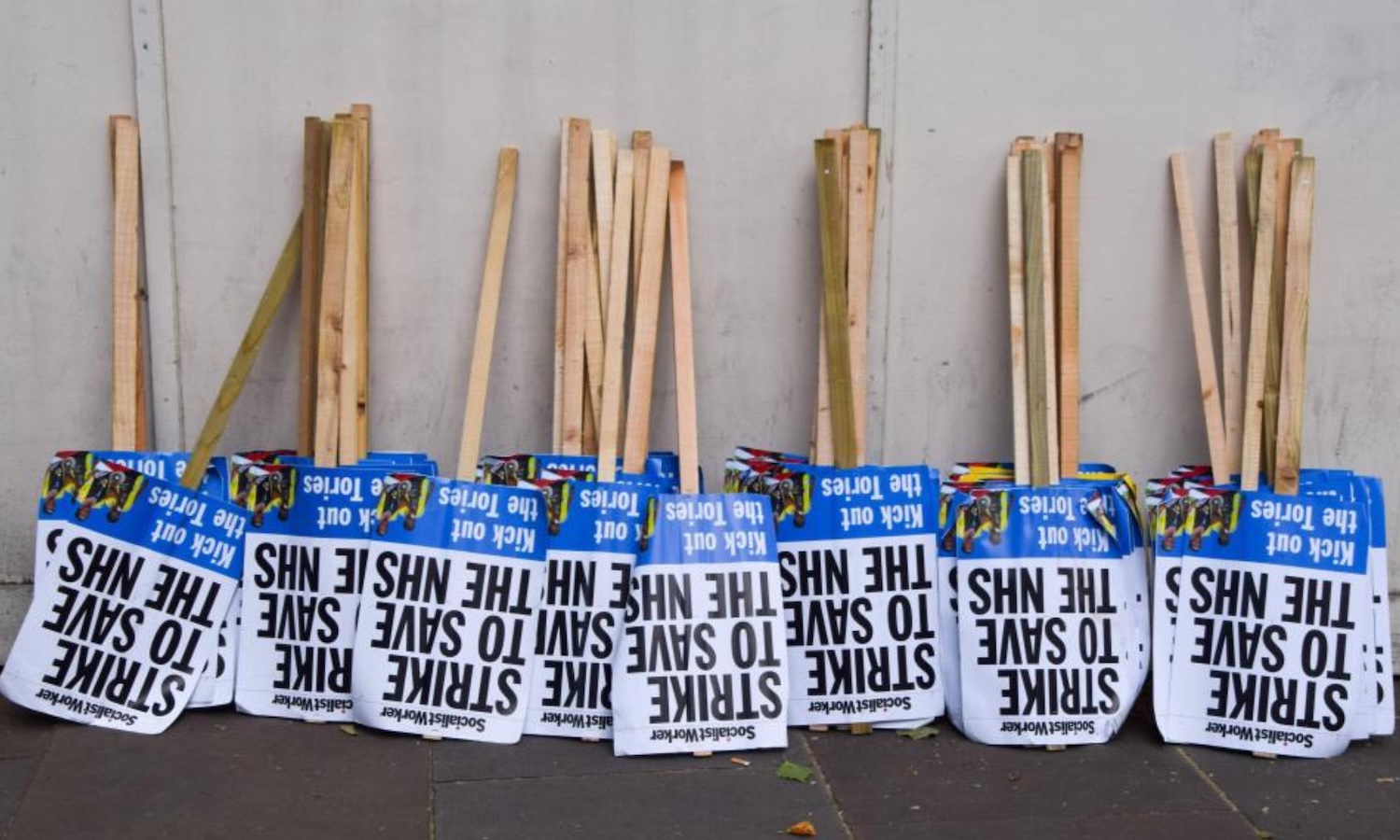Within a fortnight of his second birthday, Awaab Ishak died.
Mr and Mrs Ishak had noticed mould in their rented home in 2017, and, after reporting it, had been told to paint over it, which they did. Life went on, and so did the mould, which, as per instructions, was again painted over when it reappeared.
A normal day to many, 13 December 2018 was a special day for Awaab’s parents as they welcomed their son into the world: a “happy, smiley baby” taking his first breaths. He grew like magic, as little ones do, and ate and laughed and cried and played and, after all that, slept and, as any parent can attest, woke up a lot too.
The mould grew, too.
In June 2020, Awaab’s dad instructed solicitors about the recurring mould since, owing to ‘policy’, no repairs could be carried out without an agreement from the claimant’s solicitors.
Since Awaab’s parents were expecting another baby, a friend and sibling for their now 18-month-old boy, they were visited by a health visitor on 1 July. Awaab’s mum and dad showed the health visitor the mould in their home and asked with help in getting moved. A week later, the health visitor wrote a letter “expressing her concerns about the mould in the house and the potential impact to the health of Awaab”.
A ‘disrepair manager’ finally paid the family a visit on 14 July 2020 (three years after the first report) to verify the accuracy of the family’s claim. He inspected the property and confirmed that actions were needed: mould in the kitchen on the walls and ceiling required treatment; mould in the bathroom on the walls and ceiling required treatment; mould seen in the cupboard in the bedroom required treating using a three-part treatment. A plumber was asked to attend in order to confirm the same.
The health visitor re-sent her letter, four months later and at the urging of Abwab’s father. On 20 November, a ‘technical inspector’ came to look at the house. His effort to aid this now desperate situation? He noted the mould “and also confirmed there was no effective ventilation in the bathroom as the fan worked but very poorly. The kitchen had no mechanical ventilation at all.” He “recommended a survey to look at the ventilation issues and treatment of the mould”.
Four professionals had by this point visited the house, yet no action whatsoever had been taken. The coroner who investigated the death of little Awaab summed it up:
“I find as a matter of fact that no action was taken and from July 2020 until December 2020 Awaab continued to have chronic exposure to harmful mould.” (Awaab Ishak death: the coroner’s verdict in full by Jack Simpson, Inside Housing, 16 November 2022)
On 19 December 2020, Awaab’s parents carried their now two-year-old boy, struggling to breathe, into Rochdale Urgent Care Centre. He was transferred to another urgent care centre, given treatment, diagnosed with suspected croup and, as he was showing signs of recovery, sent home. On arriving home, he deteriorated again and, though his parents took him back to the hospital, their son died.
He died, robbed of his chance to become part of the world before he even knew how to spell the word.
Slum housing
Within a fortnight of turning two, Awaab Ishak died as a direct result of black mould and fungus infesting his first and only home. That is one way of putting this event, an event that ought to be unimaginable it a ‘rich, developed country’. We would put it a different way: he was killed.
Our view was first summed up by Friedrich Engels in his classic work on the conditions of life for workers in the cities of 1840s Britain:
“When one individual inflicts bodily injury upon another such that death results, we call the deed manslaughter; when the assailant knew in advance that the injury would be fatal, we call his deed murder.
“But when society places hundreds of proletarians in such a position that they inevitably meet a too early and an unnatural death, one which is quite as much a death by violence as that by the sword or bullet; when it deprives thousands of the necessaries of life, places them under conditions in which they cannot live – forces them, through the strong arm of the law, to remain in such conditions until that death ensues which is the inevitable consequence – knows that these thousands of victims must perish, and yet permits these conditions to remain, its deed is murder just as surely as the deed of the single individual; disguised, malicious murder, murder against which none can defend himself, which does not seem what it is, because no man sees the murderer, because the death of the victim seems a natural one, since the offence is more one of omission than of commission.
“But murder it remains.” (Condition of the Working Class in England, 1845, Chapter 5)
Nearly half a million homes in England have serious problems with condensation and mould, leading England housing ombudsman Richard Blakeway to report that landlords need to make a more serious effort to tackle the “real risk of worsening damp and mould issues”, complaining that there is an “over-reliance being placed on the contribution of a tenant’s lifestyle” as the cause of the problem. (Housing Ombudsman Service: Spotlight on Damp and Mould. It’s not lifestyle, October 2021)
Landlords aren’t making sure that the homes they allow access to at a hefty fee (as much as 50 percent of a worker’s wages) are fit for human habitation, and are even trying to push the blame onto the victims of such a parasitic relationship for not keeping the heating on or not opening the windows enough.
At this point, the reader may have conjured up an image of the landlord who ignored the pleas of Awaab’s parents. Perhaps you have imagined a lone landlord who owns a few houses but can’t afford or isn’t willing to do the repairs. Maybe you’re thinking of a big housing conglomerate that sees workers merely as ‘opportunities for rent extraction’. You may not have pictured Rochdale Boroughwide Housing (RBH), “the social housing provider to become a mutual organisation, co-owned by its tenants and employees”.
Basing analysis on statistics, which any enquiring worker should, we can see that conditions are worse in the private rental sector (PRS) than in social or ‘owner-occupied homes’. In fact, the private sector has the worst housing conditions. The English Housing Survey estimates that, in 2019, 23 percent of privately rented homes did not meet the decent home standard – around 1.1 million homes.
This compares with 18 percent of owner-occupied homes and 12 percent of socially-rented homes. Privately rented homes are more likely to have at least one Category 1 hazard under the housing health and safety rating system (HHSRS).
Notice the fact that across all categories of housing, regardless of the terms of occupancy, taken on average, one in five do not meet the basic standard of providing a decent place to live.
Whatever form the relationship of landlord and tenant takes, the same antagonistic motives are present: the tenants’ motive of needing cheap, good quality, secure homes is diametrically opposed to the landlords’ motive of extracting maximum profit from his investment, realised by spending the bare minimum on repairs and by adjusting rents or selling in accordance with the dictates of market conditions.
Those who are not yet able to identify the class interests behind all phenomena and relationships in capitalist society are apt to fall for the nonsense of “Buy your own home!” or “You are free to move if you don’t like it!” Alternatively, such innocents are to be found beseeching the government, long ago identified by Karl Marx and Friedrich Engels as “a committee for managing the common affairs of the whole bourgeoisie”, to step in and “do something”! (Manifesto of the Communist Party, 1848, Chapter 1)
Tenant ‘protections’
How do British MPs, many of them landlords with considerable wealth, ‘do’ this ‘something’? Well of course they serve their own interests alongside serving the interests of their masters in the monopoly capitalist class. They block or put off any and all efforts aimed at effecting meaningful change, while setting up toothless ‘regulators’, which they pretend are able to mediate this irreconcilable situation.
After many twists and turns, a bill aiming to legislate a landlord’s (council or private) obligation to ensure all rented homes are fit for human habitation landed in front of MPs in 2016. It may not come as a shock to our readers to hear that it was thrown out. With 312 voting against and only 205 in favour, our corrupt ‘representatives’ chose unequivocally (as ever) to prioritise the interests of their bosses, and of the system that guarantees their own wealth at the cost of the mass of workers.
Before the vote, the government asserted that the amendment would “result in unnecessary regulation and cost to landlords, which will deter further investment and push up rents for tenants.
“Of course we believe that all homes should be of a decent standard, and that all tenants should have a safe place in which to live regardless of tenure, but local authorities already have strong and effective powers to deal with poor quality and unsafe accommodation, and we expect them to use them.”
A translation: “The current conditions are fine by us, and yes, people are getting sick and dying, but investors come first. The ineffective powers to sort this will remain ineffective.”
In a bid to explain their obvious anti-worker voting stance, it was claimed by those voting against the bill that there are already “implied terms in a tenancy agreement that require landlords to let properties which are ‘fit for human habitation’”. This was a reference to the Landlord and Tenant Act, 1985.
However, these rules only apply to people who have an annual rent of less than £52 (or £80 in London). The ridiculously low threshold was set in the 1920s and has never been updated. The House of Commons Library describes these ‘implied terms’ as “obsolete”.
So, as in matters of work, health, education and all other spheres of life that affect workers, capital works via a thousand threads to maintain and exacerbate our slavery.
Destruction of social housing
The loss of cheaper, state maintained housing has not only led to higher rent prices but also to poorer quality housing across the board, since private interests no longer have to compete with the decent conditions that once prevailed in readily available and cheap council houses.
The short-lived ‘joy’ at buying your council house has been whittled away over the years. Every overproduction crisis leads to another tranche of workers (and small landlords) being forced to sell up at rock bottom prices, only for large investment funds swoop in and snap them up.
Thus in this, as in all other spheres where the market holds sway, Britain’s housing stock is being steadily concentrated into fewer and fewer hands. Capitalism tends towards monopoly, and rent levels approach immiseration levels as the housing market is thus monopolised.
The destruction of huge numbers of perfectly adequate former council houses and blocks, and their replacement by fewer, poorly-built houses is also speeding up the process. Local workers try to push back, but find themselves unable to compete with extremely well-funded local authority campaigns in favour of demolition.
The result, unsurprisingly, is a steady growth in the number of working-class families suffering homelessness, overcrowding and deprivation.
Housing under workers’ control and ownership
Ask any worker what house is to them, and they will answer something like: “a place to live”, “where I rest”, “where my babies were raised”. Ask a landlord or a capitalist, and you’ll get a very different response: “an investment opportunity”, “a passive income”, “a way to diversify your portfolio”.
These answers also reveal the relationship the two classes have with houses. Where a worker sees a ‘use value’, a place in which to sleep, eat, love, raise kids, read, meet friends, etc, a capitalist sees ‘exchange value’ a commodity to be sold or rented so as to realise a profit.
In these opposing, antagonistic viewpoints is revealed the contradiction between housing as a human need and housing as a commodity. Commodities are not produced primarily to meet human needs, but in order to be exchanged on the market. Housing is not produced according to what the members of a society need, but according to what the market will bear – what can be sold.
The way forward?
The law of production for profit, which is the motive force for all economic activity within the capitalist system, means that shaming, campaigning or explaining to the exploiting classes will have as much impact as the coat of paint on the mould that killed baby Awaab.
What will have an effect is changing the fundamental relationship between the forces of production and our relationship to those productive forces. Under capitalism, productive forces (factories, farms etc) are social in character; workers operate them together. No product is ever now created by one worker acting alone. By contrast (and this is the source of the conflict), the relations of production are this: the owner of the means of production owns, and consumes or distributes, the fruits of the labour of those working in his factory, on his land, etc.
When laid out like this, the solution becomes clear. Bring both the forces of production and the relations of production onto accord; make them both social in nature!
If we apply this solution to housing, it becomes obvious that we would be quite capable of creating a social housing system worthy of the name, where the whole aim of the endeavour would be to house workers according to their needs, whether the right location (near to employment, schooling, childcare, nature spots, transport, hospital etc) or a building’s suitability as a home (communal heating, cheap utilities, regular and high-level maintenance, improvement with advances in technology, beauty and quality in design).
We can achieve this only by doing away with the present economic system, which demands that everything be transformed into capital in order to produce profit, and cares not that the end result is workers paying ever more extortionate rents for ever poorer housing. We can achieve it through a social revolution and the replacement of production for profit with socialist planning and production for need.











